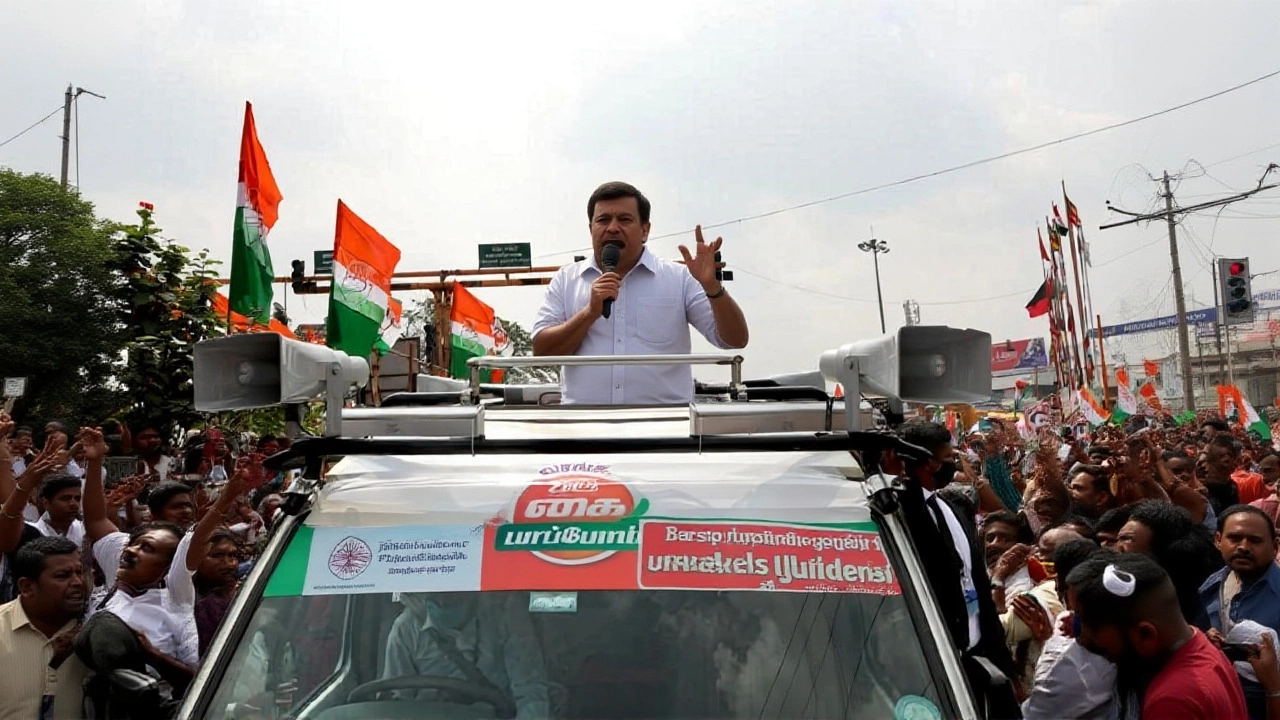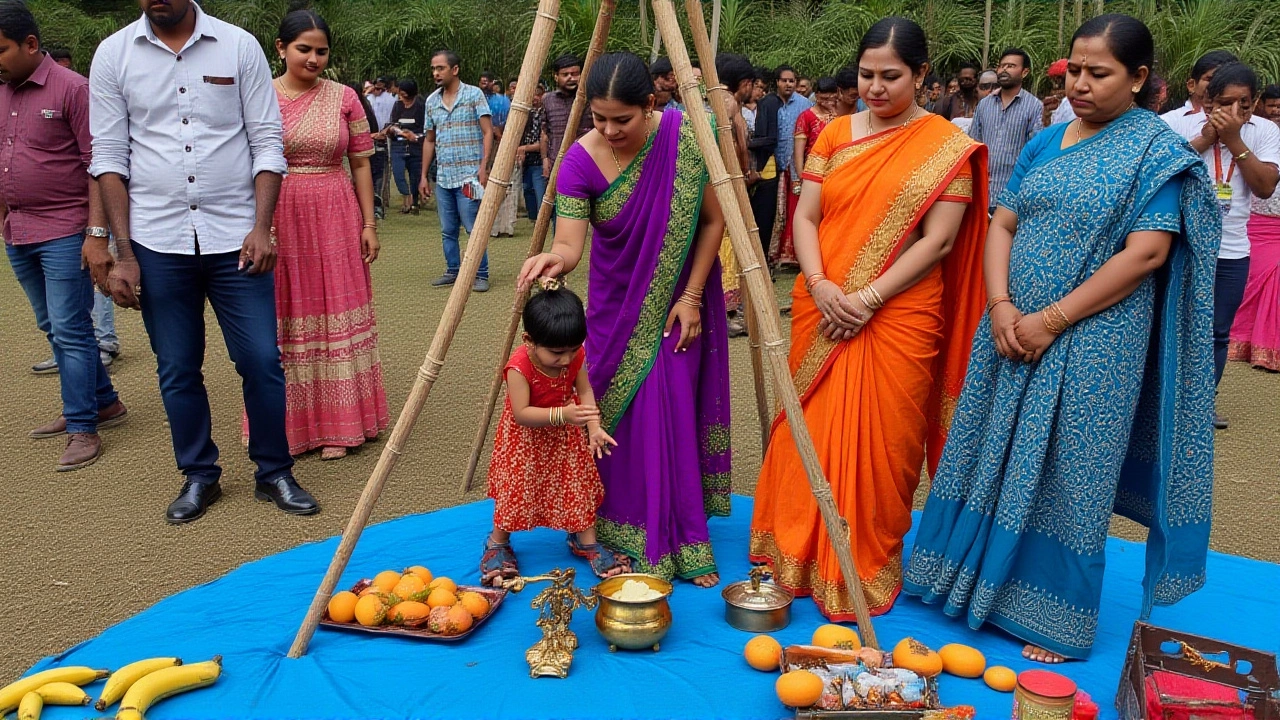On the evening of January 13, 2025, as the last sliver of sun dipped below the horizon, thousands across Tamil Nadu held their breath. At 10:33 PM, according to Drik Panchang, the celestial moment of Thai Pongal Sankranti arrived — the precise instant the Sun crossed into Capricorn, signaling the start of Uttarayan. By dawn the next day, the four-day Pongal 2025 festival was in full swing, with clay pots of rice and jaggery bubbling over on hearths from Madurai to Chennai, a sign of abundance, gratitude, and renewal.
Four Days, Four Rituals: The Soul of Pongal
The festival doesn’t just celebrate harvest — it honors the entire cycle of rural life. Pongal, meaning ‘to boil over’ in Tamil, is more than a dish. It’s a ritual, a prayer, and a promise.
Day one, Bhogi Pongal on January 14, saw families gathering before sunrise to burn old clothes, broken tools, and unused furniture in bonfires. It’s a symbolic purge — letting go of the past to make space for the new. In villages near Coimbatore, children danced around the flames, chanting songs passed down for generations. "It’s not about trash," said 72-year-old farmer S. Ramanathan in Salem. "It’s about cleaning the soul before we thank the earth."
Day two, Thai Pongal on January 15, is the heart of the festival. At sunrise, women in colorful silk sarees placed freshly cooked Pongal — a sweet dish of new rice, milk, cardamom, and jaggery — in clay pots outside their homes, letting it boil over as an offering to Surya, the Sun God. The overflow isn’t just lucky — it’s sacred. "If it doesn’t boil over, the year won’t overflow with blessings," explained Priya Srinivasan, a priestess at the Radhakrishna Temple in Chennai. In temples across Tamil Nadu, priests chanted Vedic hymns as devotees offered sugarcane, turmeric, and coconuts.
Day three, Mattu Pongal on January 16, turns the spotlight on the unsung heroes of agriculture: cattle. Bulls and cows, their horns painted in bright hues, adorned with garlands of marigolds and bells, were bathed, fed special treats of rice balls and jaggery, and paraded through village streets. In Erode, farmers tied silver coins to their animals’ foreheads — a gesture of thanks for plowing fields and pulling carts. "They don’t get holidays," said dairy owner M. Karthikeyan. "But today, they’re kings."
Final day, Kaanum Pongal on January 17, is for connection. Families picnic at riverbanks, visit relatives, and exchange gifts. Younger generations, often working in cities, return home. "It’s the only time my daughter puts down her phone," laughed Ravi Kumar from Bengaluru, visiting his ancestral village in Thanjavur. "She helps paint kolams. She tastes the Pongal. She remembers."
More Than a Festival: A Living Heritage
Pongal isn’t new. Inscriptions from the Chola Empire — dating back over a thousand years — record land grants made during this season. The Tamil Nadu Tourism Department confirms the festival’s roots stretch deeper than any modern holiday. It’s tied to the Tamil solar calendar, marking the first day of Thai, a month believed to bring prosperity.
Traditional performances pulse through the streets: Mayilattam, where dancers mimic peacocks in feathered costumes; Kolattam, rhythmic stick dances performed in circles; and the daring, controversial Jallikattu — a bull-taming sport that draws tens of thousands despite legal battles. In Madurai, crowds roared as young men clung to bulls’ humps, a display of strength and courage tied to ancient warrior traditions.
At the same time, the Tamil Nadu Tourism Department reported a surge in eco-conscious celebrations. Biodegradable kolams made from turmeric and flower petals replaced synthetic dyes. Plastic bags vanished from Pongal Mela fairs in Coimbatore and Tirunelveli, replaced by handwoven baskets and clay pots. "We’re not just celebrating harvest," said environmental activist L. Geetha. "We’re defending it."

Global Roots, Local Roots
From Singapore to Sydney, from Toronto to Trinidad, Tamil diaspora communities lit diyas and cooked Pongal in unison. In London, over 12,000 gathered at Trafalgar Square for a cultural parade. In New York, temples hosted multi-generational feasts. "It’s how we stay connected," said Anjali Menon, a second-generation Tamil-American in New Jersey. "My kids know the story of Surya better than they know their school holidays."
The festival also aligns with other regional harvest celebrations: Makar Sankranti in North India, Lohri in Punjab, and Uttarayan in Gujarat. But Pongal remains distinct — its rituals are deeply agricultural, its timing tied to the Tamil solar year, and its spirit inseparable from the land.

What’s Next? Sustainability and the Future of Tradition
As climate change disrupts monsoon patterns, farmers in Tamil Nadu are returning to traditional crop rotations and organic seeds. Local farmers’ markets, particularly in Tanur and Kodaikanal, saw record footfall during Pongal 2025. "People aren’t just buying rice — they’re buying back their heritage," said K. Balasubramanian, a seed preservationist in Thanjavur.
Organizations like Aachi Foods have launched campaigns to promote heirloom rice varieties and reduce food waste. "The Pongal dish is a symbol of abundance," said their sustainability director. "But abundance isn’t about excess. It’s about respect."
With the 2026 dates already calculated — January 13 to 16 — anticipation is building. The festival’s endurance isn’t accidental. It survives because it adapts. Because it matters. Because it reminds people, generation after generation, where their food comes from — and who made it possible.
Frequently Asked Questions
Why is Pongal celebrated for four days, and what does each day represent?
Each day honors a different aspect of rural life: Bhogi Pongal cleanses the old, Thai Pongal thanks the Sun God for harvest, Mattu Pongal celebrates cattle who till the land, and Kaanum Pongal strengthens family and community bonds. The structure reflects a complete cycle — release, gratitude, reverence, and connection — rooted in Tamil agrarian values.
How is Thai Pongal different from Makar Sankranti in North India?
While both mark the Sun’s northward journey, Thai Pongal is uniquely Tamil, centered on cooking the Pongal dish as a sacred offering and tied to the Tamil solar calendar. Makar Sankranti often focuses on kite flying and sesame sweets. Pongal’s rituals are more agrarian, with specific days dedicated to cattle and community feasts, making it a multi-day agricultural celebration rather than a single-day observance.
What role do cattle play in Pongal, and why are they honored?
Cattle are central to Tamil agriculture — they plow fields, provide milk, and transport goods. On Mattu Pongal, they’re bathed, decorated with paint and flowers, fed special treats, and paraded. This isn’t symbolic; it’s economic reverence. In villages, a farmer’s cow is often his most valuable asset. Honoring them ensures their health for the next planting season and acknowledges their role in survival.
How has Pongal evolved in modern times, especially in urban areas?
In cities, families now celebrate with smaller rituals — cooking Pongal in apartments, sharing videos of kolams on WhatsApp, and attending temple events. But the core remains: gratitude for nature. Eco-friendly kolams, zero-waste feasts, and community food drives have become popular. Even in Dubai, Tamil professionals organize potluck Pongal dinners with local rice and jaggery, keeping traditions alive far from home.
Is Jallikattu still legal, and why is it part of Pongal?
Jallikattu was reinstated in Tamil Nadu after a Supreme Court ruling in 2017 recognized it as a protected cultural tradition under Article 29 of the Indian Constitution. It’s not a sport of cruelty, but a test of courage and a ritual tied to bull breeding — only native breeds like the Kangayam are used. Young men who participate are often from farming families who view it as honoring their animals’ strength and spirit.
Why is the boiling over of the Pongal dish so important?
The overflow symbolizes abundance — not just in food, but in life. A pot that doesn’t boil over is seen as a bad omen for the year ahead. Families watch the pot closely, often chanting blessings as it rises. The dish is cooked in clay pots outdoors, facing the rising sun, making the act both spiritual and agricultural: the sun’s energy, the new harvest, and the pot’s capacity to overflow — all are seen as divine gifts.
